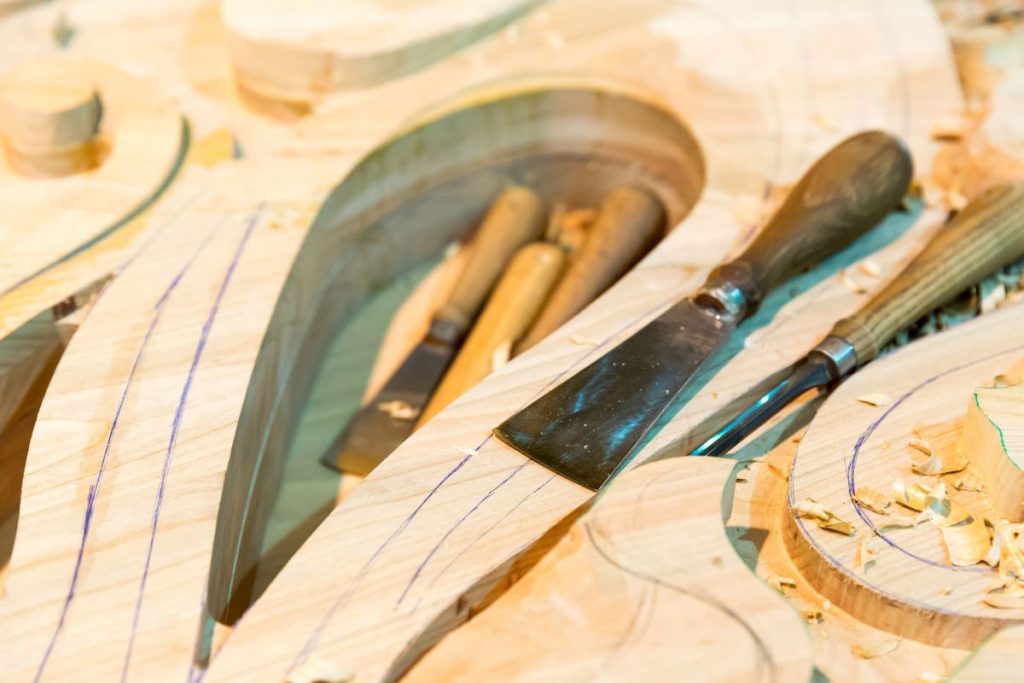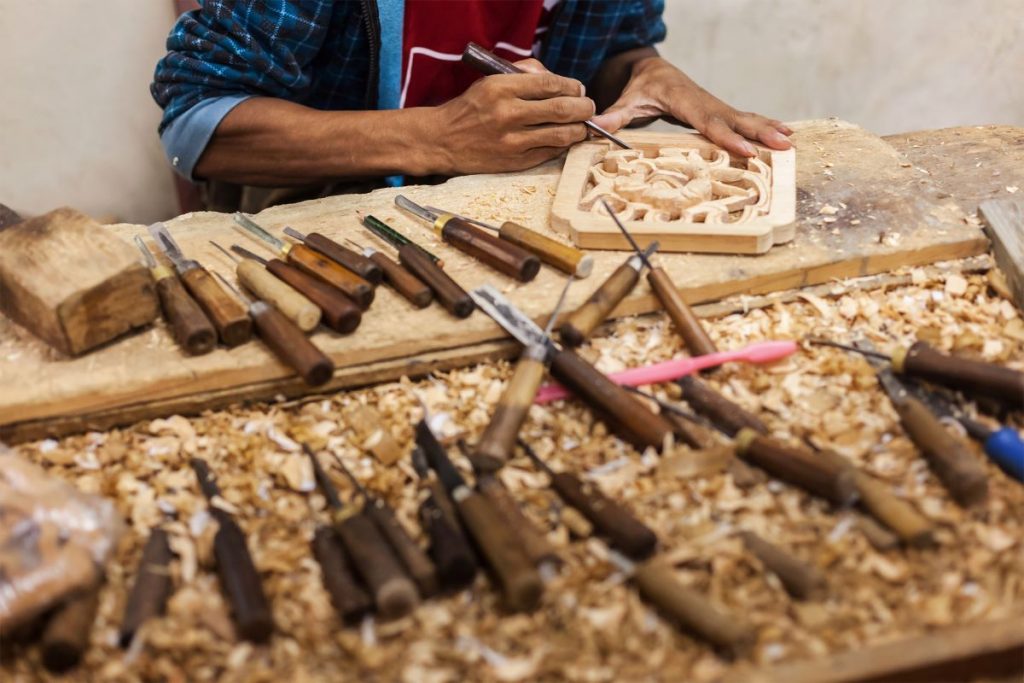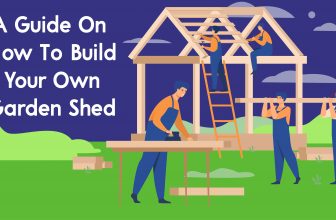Contents
Wood carving is an excellent technique to learn. Whether you’re doing it as a hobby or you’d like to make larger objects for around the house, wood carving is something that has been done for thousands of years: and you can do it, too! With so many tools out there, it’s difficult to know what to buy as a beginner. You don’t want to go out and purchase every tool right away, as this will become too expensive. Instead, we’ve put together a list of some of the more basic wood carving tools you’ll want to pick up when just starting off as a beginner.
What Tools Do You Need for Carving Wood?

Wood carving is an art form where the quality of your tools will directly impact the quality of your finished product. Similar to painting and sculpting, you’ll never reach your potential if you don’t surround yourself with quality equipment. However, quality doesn’t mean expensive or excessive. There are plenty of tools you won’t need when you’re beginning. In fact, you may only need a handful of wood carving tools.
When considering the different wood carving tools, you’ll need to keep in mind the kind of wood you’re going with. The wood you use will have a direct impact on the kind of tools you use. Different kinds of wood are softer or harder than others. Additionally, the level of moisture within the wood will play an impact as well.
You’ll also need to consider what you’re looking to accomplish. Do you want to create a relief carving, which is where you carve out an image so it looks like a raised 2D visual, or do you want to carve out a complete three-dimensional object, where it can be viewed from all sides? Realistically, it is going to be best to start with the relief carving and work your way up; but ultimately it is up to you to decide and experiment.
What Are the Best Woods for Carving?

When selecting the best woods for carving, it will come down whether you want soft or hard wood. Each has its own benefits. Soft wood is generally easier to work with, while hard wood is excellent when you’re building something that will hold any kind of weight. As a beginner, you’ll likely want to go with something that’s softer as it’s easier to carve and work with. Here are a handful of woods to look into and what each is best for:
Basswood
This is a wood that is available throughout both Europe and North America. There is very little grain in this kind of wood and, as such, it is a soft wood and easy to work with. It is easier to break this wood, too, but when learning to carve this is probably exactly where you want to start off. It won’t have the same kind of beautiful grain as others, but you can work up to that eventually.
Aspen
This wood is a bit harder than basswood but still considered a soft wood. It is inexpensive and a great option for working. While you should cut your teeth with basswood when beginning, it won’t prove difficult to jump from basswood to aspen.
Butternut
This is another excellent wood to use when you’re beginning. Unlike basswood, it has a nice grain, so it will give you more of that “wood” feel to it. It is easier to carve into than walnut and is lighter in color.
Black Walnut
This is a wood you’ll want to consider after you’ve gained some experience. It isn’t as soft as the other words, but it still has plenty of give. It is also more expensive, so don’t jump up to black walnut until you’ve worked with the other kinds of wood. This has an excellent grain that makes it an excellent choice for everything from carving to furniture making.
Oak
When you want a wood that is strong and sturdy, there really is nothing that beats oak (at least for readily available wood). There are different kinds of oak woods to consider, but leave this wood for when you have more experience.
A Beginner’s Guide to Wood Carving Tools

Thankfully as you shop around for new wood carving tools, there are plenty of sets you can pick up as a beginner. Beginner sets are perfect, as these will give you just about everything you need to start out a beginner project. Don’t dive right in to something extremely difficult or elaborate. Slowly work your way up. Just like any other art form, it will take time and practice to master the craft.
You may also want to pick up a wood carving book or follow a specific carving instructional series on YouTube where you start with something small and gradually build up to larger items. These instructions will showcase exactly the kind of tools you need. You can pick up just what you need and then build up from there.
Chip Carving Knife
The chip carving knife, as is the case with most other wood carving tools, will come in a number of blade and edge types. Different blades provide different angles and levels of thickness, so when picking up these tools you might want to buy sets with varying blades so you have other options.
The chip carving knife is likely the first real tool you’ll need. It is designed for whittling and for basic chip carving, where you remove small amounts of wood. Usually the blade will be about an inch and a half long, which gives you more direct control over what you’re carving.
When shopping around, you’ll want to pick out a high carbon steel variation. These will maintain the sharp edge longer. Dull knives will force you to work harder and put more pressure into the cutting, which opens you up to injury and mistakes.
U and V-Gauges
These are U and V shaped gauge knives that will give you either angled cuts or cuts with a curved slope. These are great for carving and will give you different levels of depth when removing wood. The size of these gauges will vary. Some are a s small as 2mm in width while others may reach 60 mm in width (although the V-gauge is usually not as wide as it is designed to give you a hard angle cut.
This is a tool where you’ll likely want to start off smaller than you’ll be working with a smaller project and then build up the number of tips you have. When you shop around for wood carving tools most entry level kits will have different sizes for you to begin with.
Palm Tools
There are a number of palm tools that are great when you’re just getting started in wood carving. These tools are known as “palm tools” because there is a circular end to it that fits into the palm of your hand like a small door knob. These give you greater control over your carving and work, especially well when carving into soft wood (think basswood). Usually when buying wood carving tools for beginners, most sets will come with palm tools.
Make sure to follow the instructions on the wood carving instructions to see if it is recommended to pick up palm tools or the longer handle tools, which are desirable when carving hard woods (the longer handle tools give you more leverage for working into the thicker, hard wood).
Carpenter’s Chisel
This is something you may not need until a bit later on in your wood carving education, although it’s at least worth mentioning. It has a flat edge at the top and you’ll use a hammer to bang the handle of the chisel. This will push under the wood allowing you to remove larger chunks of wood flakes.
If you picture a carpenter working in the garage, this is likely one of the tools you’re picturing. These aren’t great for sculpting work due to the blunt-like design of it. However, as you work up to working with larger pieces of wood, this will be a must-have tool to have on hand.
Mallet
This is the other piece of the carpenter’s chisel puzzle. You can’t really have one without the other. However, the mallet goes beyond just tapping the end of the chisel. This will is great for basically every project you’ll have while working with wood.
You can either go with a rubber constructed mallet or opt for a traditional wood design. The wood ones are great and have a more traditional feel, but the rubber mallets will make less noise, which may be important to you.
Conclusion
When it comes to wood carving tools, there is no shortage of options out there. However, as a beginner you don’t need to go out and buy everything for sale. Instead, you just need to pick up a handful of tools at a time and build up from there.
So whether you’re following the instructions from a book or from a video series, you’ll have the ability to slowly build up what you’re making and your skill set as well as the number of tools you have access to.






